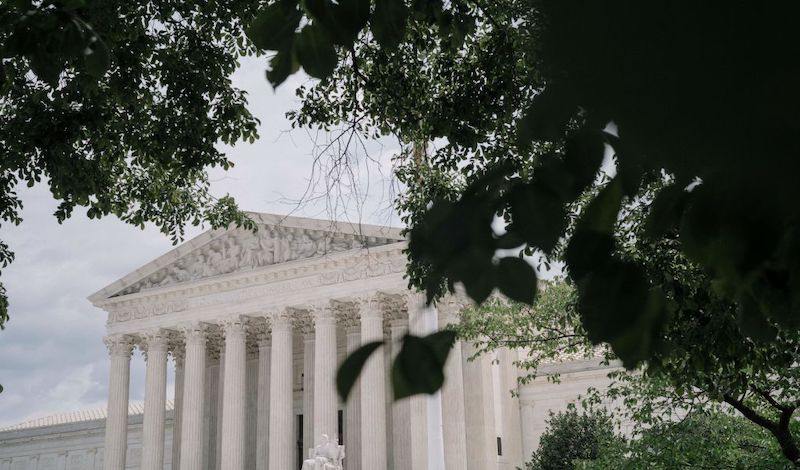
Collins v. Yellen further clarifies the scope of “for cause” removal of agency heads.
At the end of its October 2019 term, in Seila Law v. Consumer Finance Protection Board, the Supreme Court limited a key precedent governing presidential removal of executive branch officials—Humphrey’s Executor v. United States.
Since 1935, Humphrey’s Executor has given Congress a firm basis for according “for cause” protections from removal to officials exercising quasi-legislative and quasi‑judicial functions but few “executive” functions. Under that theory, Congress has created an alphabet soup of independent agencies headed by multi-member boards and commissions.
Seila Law involved the Consumer Finance Protection Bureau (CFPB), which unlike traditional independent agencies that combine primarily quasi-legislative and quasi-adjudicative functions, is headed by a single person. The Court held that agency heads who are not members of a multi-member body must be subject to removal at will by the President. Though the opinion highlighted several disturbing aspects of the CFPB’s and its Director’s unusual insulation from presidential control, the Court expressed its rule in categorical terms: no single-headed agency could be led by an official with tenure protection.
Ten days after handing down Seila Law, the Court granted certiorari in Collins v. Mnuchin–renamed Collins v. Yellen to reflect the change in administrations. Collins challenged the “for cause” removal provisions protecting the Director of the Federal Housing Finance Agency (FHFA). In some ways, Collins was an easier case than Seila Law. The FHFA’s responsibilities seemed far more amenable to characterization as “executive.” The agency and its Director, however, did not share some of the attributes of the CFPB and its head that had troubled the Seila Law Court.
The portion of the Court’s decision in Collins v. Yellen addressing Congress’ power to limit removal was, frankly, anti-climactic. The Court reiterated its Seila Law holding—an agency head must be cabined by either serving subject to presidential dismissal or having to share powers with others forming a multi-member governing body.
It did not matter that the FHFA, unlike the CFPB, administers only one statute (not 19), regulates only a small number of government-sponsored enterprises (not millions of individuals and businesses), and possesses little rulemaking and enforcement authority. Nor did it matter that, in Collins, the FHFA had merely taken on the role of conservator, a role many private entities assume. And finally, it did not matter that the provision protecting the director’s tenure generally allowed the President to remove the director for any unspecified “cause,” rather than limiting removal to specific grounds, such as “inefficiency, neglect of duty, and malfeasance in office.” Indeed, even the Seila Law dissenters agreed that Seila Law was controlling.
The more interesting and surprising aspects of Collins v. Yellen deal with what one might call the appointment and removal litigation “ecosystem”—the set of doctrines that determines the right to make such challenges and the available remedies. Humphrey’s Executor, Myers v. United States, and Weiner v. United States, notwithstanding, appointment and removal cases are rarely brought by the executive branch or by the official who has been removed or whose appointment is constitutionally questionable.
Although the facts of Collins have a complexity that only experts in bankruptcy reorganization and similar insolvency proceedings could truly love, a cursory familiarity with them is necessary.
In September 2008, shortly after the collapse of the housing bubble, which threatened both Fannie Mae’s and Freddie Mac’s solvency, the FHFA’s Director imposed a conservatorship upon each corporation, appointing the FHFA itself as conservator.
Almost immediately, the FHFA concluded a purchase agreement under which the Treasury Department would purchase Fannie Mae’s and Freddie Mac’s stock and provide massive capital infusions. After two amendments to increase Treasury’s contributions, FHFA’s Acting Director and the Secretary of the Treasury agreed to amend the purchase agreement again in 2012.
Under this “third amendment” to the purchase agreement, Fannie Mae and Freddie Mac transferred “enormous amounts of wealth” to the Treasury. This amendment remained in place until January 2021, when a “fourth amendment” was concluded. The Collins litigation began in 2016, when a group of Fannie Mae’s and Freddie Mac’s private shareholders sought to invalidate the third amendment and claw back the monetary transfers to the Treasury.
Against this factual backdrop, Collins yielded three noteworthy implications for the appointment and removal litigation ecosystem. Two implications center on standing doctrine, namely the Court’s discussion of the requirement that a plaintiff’s injury be “traceable” to the alleged legal violation and the Court’s disregard of the “generalized grievance” doctrine. The third implication involves remedial issues.
First, on the traceability requirement for standing, the Court’s majority concluded that the plaintiff’s injury need not be traceable to Congress’ limitations on the President’s removal power, but merely to the actions of an agency head protected from at-will removal. But whether either President Obama or President Trump would have removed any of the FHFA Directors for agreeing to the third amendment or continuing to implement it is almost entirely speculative.
Indeed, when the majority addressed that inquiry in discussing the appropriate remedy, it essentially concluded that the inquiry was fact specific. In particular, the decision turned upon what the President or the FHFA Directors would have done absent the unconstitutional “for cause” removal protections.
Justice Thomas, concurring separately, homed in on the traceability problem. He discussed traceability in general, but in doing so challenged a possible doctrinal basis for the majority’s position, namely the procedural injury doctrine. Under that doctrine, the Court recognizes standing when the litigant has been subjected to an unlawful procedure, regardless of whether the substantive decision would have come out differently.
In Justice Thomas’s view, the traceability element required a two-part showing. First, that the challenged “for cause” removal provision was unlawful, and second, that the officer’s action was unlawful. To him, an unconstitutional removal provision does not taint all actions taken by a properly appointed occupant of the office. Thus, to satisfy the traceability element, plaintiffs needed to establish that the adoption or implementation of the third amendment to the purchase agreement was itself unlawful, which they had failed to do.
A second important aspect of Collins involves the “generalized grievance” doctrine. Ordinarily, courts cannot entertain claims from plaintiffs who are asserting a mere generalized grievance “shared in substantially equal measure by all or a large class of citizens.” The doctrine has rendered some constitutional provisions largely judicially unenforceable in whole or in part.
In Collins, the government argued that when Fannie Mae and Freddie Mac were put into conservatorship, their shareholders’ right to assert claims automatically passed to the FHFA. Thus, the shareholders could not proceed based on their shareholder status. As the majority explained, however, the shareholders were not asserting a right distinctive to themselves as shareholders, but one “shared by everyone in this country.” In particular, they were asserting a right to the preservation of the separation of powers. With no hint of irony, the majority recognized that seemingly generalized “right” as sufficient to sustain standing. This reasoning turned the generalized grievance doctrine on its head and expanded the number of plaintiffs who could bring appointments and removal claims.
The Court noted that more than half of its appointments and removal cases had been initiated by aggrieved private parties. But in none of those cases had parties lacked any legally cognizable interest other than the interest in enforcing the Appointments Clause or the judicially crafted removal doctrine.
Finally, Collins contains an important discussion of remedies. Historically, the Court has sought to make remedies for appointment and removal violations effective, yet not too disruptive. Lucia v. SEC illustrates the Court’s effort to provide effective remedies that also “create ‘incentives to raise Appointments Clause challenges.’” To limit the disruptiveness of the relief granted, the Court has generally found unconstitutional removal provisions severable, preserving the remainder of the regulatory scheme. The Court has also suggested that decisions by improperly tenured agency heads could be ratified by successors operating in an acting capacity and lacking tenure protections.
In Collins, the Court treaded carefully with respect to remedies. It rejected the argument that unconstitutional tenure protection voided every action taken by the protected official. Accepting the proffered approach would have provided a powerful incentive to mount such challenges, but would have been quite disruptive. In rejecting that approach, however, the Court created a sharp distinction between unconstitutional appointments and unconstitutional removal protections.
The Court posited that an improperly protected official’s acts could be invalidated if the President had attempted to remove the official but was prevented from doing so by a lower court decision. The official’s action could similarly be invalidated if the President had publicly asserted displeasure with the official’s actions, a desire to remove the official, and a felt inability to do so due to the official’s statutory tenure protection.
The Court noted that a less extreme showing might prove sufficient. It might suffice to show that were it not for the “for cause” removal provision, the President would have removed one or more of the FHFA Directors or that one or more of the Directors would have acted more favorably to shareholders due to greater fear of removal.
It is unlikely that challenges to “for cause” removal provisions will be very effectual, at least for plaintiffs seeking to reverse agency actions, if this sort of showing is required. After all, in signing statements, Presidents have repeatedly asserted that they are not bound by limitations on executive branch appointment or removal powers that Congress includes in legislation. Moreover, it will be difficult to attribute an unexplained failure to remove an official to perceived legal constraints rather than political ones. Presidents often refrain from firing officials for fear of the political repercussions.
Finally, after Seila Law and Collins, it will be even harder to assert that the President failed to remove a solo agency head due to legal constraints. These cases provide clear Supreme Court precedent broadly limiting the use of “for cause” removal provisions to protect agency heads.
This essay is part of a nine-part series, entitled The Supreme Court’s 2020-2021 Regulatory Term.




